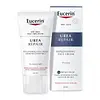What's inside
What's inside
 Key Ingredients
Key Ingredients

 Benefits
Benefits

 Concerns
Concerns

 Ingredients Side-by-side
Ingredients Side-by-side

Water
Skin ConditioningGlycerin
HumectantCyclopentasiloxane
EmollientBetaine
HumectantDimethicone
EmollientC12-15 Alkyl Benzoate
AntimicrobialPolyacrylamide
Phenoxyethanol
PreservativeCetearyl Olivate
C13-14 Isoparaffin
EmollientSorbitan Olivate
EmulsifyingDimethiconol
EmollientPhenyl Trimethicone
Skin ConditioningLaureth-7
EmulsifyingCarbomer
Emulsion StabilisingDisodium EDTA
Tocopheryl Acetate
AntioxidantUrea
BufferingParfum
Masking3-O-Ethyl Ascorbic Acid
Skin ConditioningButylene Glycol
HumectantCaprylyl Glycol
EmollientPotassium Hydroxide
BufferingSodium Citrate
BufferingBenzophenone-4
UV AbsorberLimonene
PerfumingDipropylene Glycol
HumectantAscorbyl Tetraisopalmitate
AntioxidantDimethicone Crosspolymer
Emulsion StabilisingBenzyl Benzoate
AntimicrobialHexyl Cinnamal
PerfumingLinalool
PerfumingButylphenyl Methylpropional
PerfumingBenzyl Salicylate
PerfumingCitrus Junos Fruit Extract
Skin ConditioningCitral
PerfumingHydroxycitronellal
PerfumingDenatonium Benzoate
MaskingWater, Glycerin, Cyclopentasiloxane, Betaine, Dimethicone, C12-15 Alkyl Benzoate, Polyacrylamide, Phenoxyethanol, Cetearyl Olivate, C13-14 Isoparaffin, Sorbitan Olivate, Dimethiconol, Phenyl Trimethicone, Laureth-7, Carbomer, Disodium EDTA, Tocopheryl Acetate, Urea, Parfum, 3-O-Ethyl Ascorbic Acid, Butylene Glycol, Caprylyl Glycol, Potassium Hydroxide, Sodium Citrate, Benzophenone-4, Limonene, Dipropylene Glycol, Ascorbyl Tetraisopalmitate, Dimethicone Crosspolymer, Benzyl Benzoate, Hexyl Cinnamal, Linalool, Butylphenyl Methylpropional, Benzyl Salicylate, Citrus Junos Fruit Extract, Citral, Hydroxycitronellal, Denatonium Benzoate
Water
Skin ConditioningGlycerin
HumectantUrea
BufferingCetyl Alcohol
EmollientCaprylic/Capric Triglyceride
MaskingPentaerythrityl Tetraisostearate
EmollientTriisostearin
Skin ConditioningSodium Lactate
BufferingGlyceryl Stearate
EmollientArginine Hcl
Skin ConditioningDimethicone
EmollientPotassium Cetyl Phosphate
EmulsifyingXanthan Gum
EmulsifyingBiosaccharide Gum-1
HumectantLactic Acid
Buffering1,2-Hexanediol
Skin ConditioningPhenoxyethanol
Preservative
 Reviews
Reviews

Ingredients Explained
These ingredients are found in both products.
Ingredients higher up in an ingredient list are typically present in a larger amount.
Dimethicone is a type of synthetic silicone created from natural materials such as quartz.
What it does:
Dimethicone comes in different viscosities:
Depending on the viscosity, dimethicone has different properties.
Ingredients lists don't always show which type is used, so we recommend reaching out to the brand if you have questions about the viscosity.
This ingredient is unlikely to cause irritation because it does not get absorbed into skin. However, people with silicone allergies should be careful about using this ingredient.
Note: Dimethicone may contribute to pilling. This is because it is not oil or water soluble, so pilling may occur when layered with products. When mixed with heavy oils in a formula, the outcome is also quite greasy.
Learn more about DimethiconeGlycerin is already naturally found in your skin. It helps moisturize and protect your skin.
A study from 2016 found glycerin to be more effective as a humectant than AHAs and hyaluronic acid.
As a humectant, it helps the skin stay hydrated by pulling moisture to your skin. The low molecular weight of glycerin allows it to pull moisture into the deeper layers of your skin.
Hydrated skin improves your skin barrier; Your skin barrier helps protect against irritants and bacteria.
Glycerin has also been found to have antimicrobial and antiviral properties. Due to these properties, glycerin is often used in wound and burn treatments.
In cosmetics, glycerin is usually derived from plants such as soybean or palm. However, it can also be sourced from animals, such as tallow or animal fat.
This ingredient is organic, colorless, odorless, and non-toxic.
Glycerin is the name for this ingredient in American English. British English uses Glycerol/Glycerine.
Learn more about GlycerinPhenoxyethanol is a preservative that has germicide, antimicrobial, and aromatic properties. Studies show that phenoxyethanol can prevent microbial growth. By itself, it has a scent that is similar to that of a rose.
It's often used in formulations along with Caprylyl Glycol to preserve the shelf life of products.
Urea is also called carbamide and is the diamide of carbonic acid. In cosmetics, urea is used to hydrate the skin. It also provides exfoliation in higher concentrations.
As a humectant, urea helps draw moisture from the air and from deep within the skin. This helps hydrate your skin. Studies show urea is an effective moisturizer for dry skin conditions. 40% urea is typical in medications for treating eczema and other skin conditions.
Urea has the strongest exfoliation effect in concentrations higher than 10%. It is a keratolytic agent, meaning it breaks down the keratin protein in the top layer of skin. This helps remove dead skin cells and flaking skin.
In medicine, urea has been shown to help increase the potency of other ingredients, such as fungal treatments.
Humans and animals use urea to metabolize nitrogen-containing compounds. Urea is highly soluble in water. Once dissolved, it is neither acidic nor alkaline.
Learn more about UreaWater. It's the most common cosmetic ingredient of all. You'll usually see it at the top of ingredient lists, meaning that it makes up the largest part of the product.
So why is it so popular? Water most often acts as a solvent - this means that it helps dissolve other ingredients into the formulation.
You'll also recognize water as that liquid we all need to stay alive. If you see this, drink a glass of water. Stay hydrated!
Learn more about Water